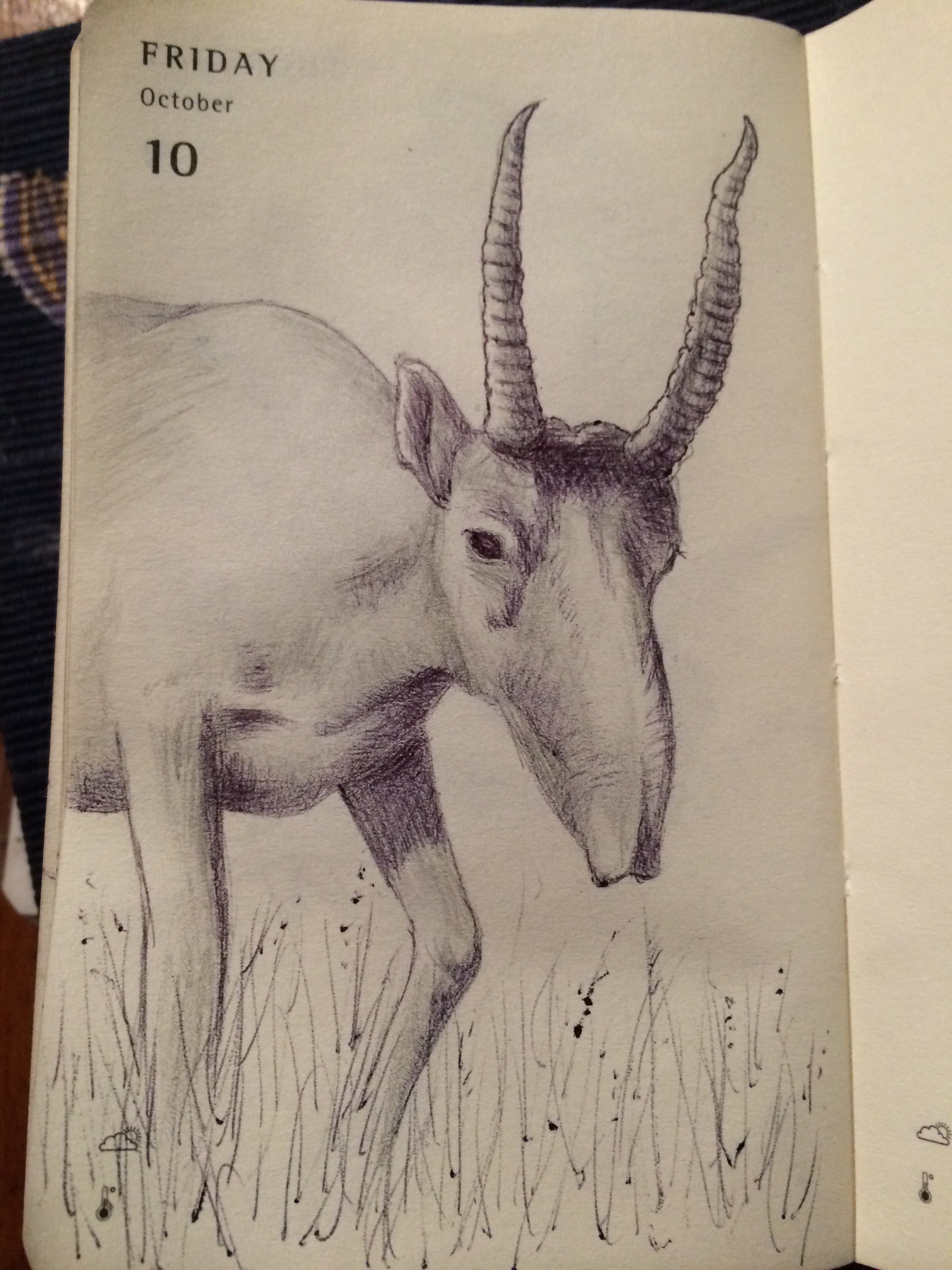The saiga antelope is a critically endangered antelope that originally inhabited a vast area of the Eurasian steppe zone from the foothills of the Carpathian Mountains and Caucasus into Dzungaria and Mongolia. They also lived in Beringian North America during the Pleistocene. Today, they are only found in one location in Russia (in The Republic of Kalmykia) and three areas in Kazakhstan (the Ural, Ustiurt and Betpak-Dala populations). The saiga antelope is extinct in People’s Republic of China and southwestern Mongolia, Romania, and Moldova.
They are a small antelope, ranging from 2′-2’7″ at the shoulder, with the horned males being larger than the hornless females. The saiga antelope has a distinct fleshy proboscis (nose). During summer migrations the saigas’ nose helps filter out dust and cools the animal’s blood. In the winter it heats up the frigid air before it hits the lungs.
In November 2010, Kazakhstan reaffirmed a ban on hunting the saiga antelope and extended the ban until 2021 in an effort to save them from extinction.
This blog contains Amazon Affiliate links. As an Amazon Associate, I may earn from qualifying purchases.


Recent Comments